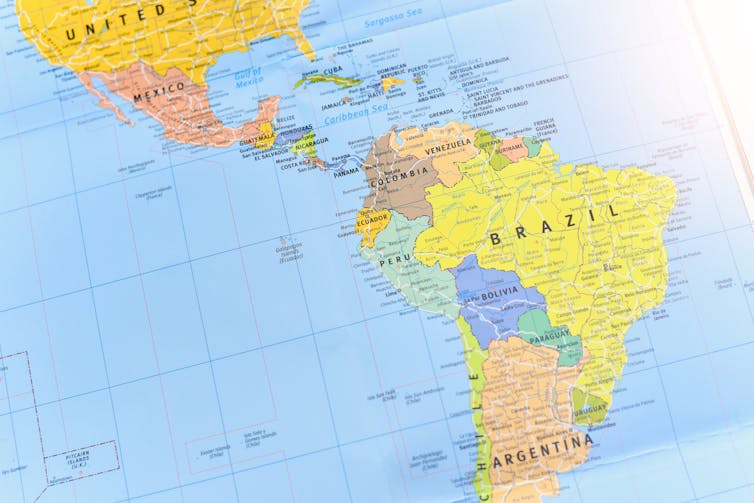This past October marked the fourth annual Latin American Heritage Month in Canada. The month recognizes the social, economic and political contributions of Latinx people in Canada and the broad demographic changes underway.
Recent census data shows that the number of people identifying as Latinx in Canada is growing fast. In B.C. the number of Latinx people has increased by nearly 50 per cent since the 2016 census. In cities like Hamilton, Ont. the Latinx diaspora is one of the fastest growing immigrant groups.
These results signal a greater need for Latinx studies at Canadian universities. At McMaster University we have introduced an Interdisciplinary Minor in Latin American and Latinx Studies to provide new perspectives and insights on peoples from the region.
As Latinx and Latin American communities continue to grow, universities must improve how they teach students about Latin America as well as Latinx communities in Canada.
Students are keen to learn about Latin America in non-extractive, interdisciplinary ways that examine the material histories of colonialism and how these influence contemporary experiences.
As ethnic studies scholar Lorgia García Peña states, Latinx studies can help to decolonize the way we teach students about the world. The field also makes use of interdisciplinary approaches to examine the histories, geographies, migration patterns and intersections of race that inform the diverse experiences of Latinx and Latin American peoples who live outside their country of origin.

Understanding diasporic communities
The Latin American population in Canada is a relatively recent immigrant community in comparison to communities in the United States. However, it is vital to understand how under-representation and inequities are impacting communities in Canada.
Toronto Public Health found that members of the Latinx community were seven times more likely to contract COVID-19 than white Torontonians.
In education, research conducted in 2008 showed that Latinx and Latin American students faced graduation barriers in the Toronto District School Board. More recently, a 2021 report from the Peel District School Board showed that Latinx and Latin American students, as well as Black and Indigenous students, were two to five times less likely to graduate within five years, when compared with the average Peel student. In addition, Black and Latinx and Latin American students were found to be underrepresented in applied level courses.
Systemic issues at the high school level have been shown to carry over to post-secondary education. Some Canadian universities have tried to address this issue by creating programs and pathways to correct under-representation of Latin American students. The University of Toronto, Western University and McMaster University have all developed programs in response to this crisis of representation and visibility.

Increasing equity, diversity and inclusion
In the last several years, we have seen many commitments made towards equity, diversity and inclusion, to varying degrees of success. As this work develops in many universities, Latinx and Latin American Studies can have a key role in EDI research and teaching.
At McMaster, our new minor program connects students and scholars with varying ties to Latin America through research and teaching, across the faculties of humanities, science and social sciences. By offering valuable, global perspectives from different branches of knowledge, fields like Latinx and Latin American studies can help challenge colonial histories and narratives.
In our own cross-disciplinary research, we have focused on understanding climate change in South America, incorporating the perspectives of Black and racialized peoples, medicinal practice in ancient communities, cuisines and foodways and human-environmental relationships.
Through our work, and that of other scholars, we find many synergies between Black, Indigenous, and Latinx Studies. These connections emerged from the shared colonial history and lived realities of different communities and groups in Latin America.
This region — which includes North, Central and South America, as well as the Caribbean — is populated by an estimated 150 million Black and African-descended peoples. It is also populated by over 58 million Indigenous Peoples belonging to at least 829 different nations and communities. As these peoples continue to establish diasporas in Canada, there is a growing need to center histories, discourses and research surrounding important topics like race, racialization and ethnicity.
Teaching and research are enriched and enhanced when Latinx and Latin American Studies draw connections with other equity-seeking groups. Fields like Latinx and Latin American Studies are as meaningful as they are essential. As García Peña notes, such fields can be:
“A critical, anticolonial site of knowledge production, learning, and teaching. Thus it provides students, faculty, and the communities they come from with an intellectual home as well as a connection to historical and social events that shape those community experiences: colonialism, wars, migrations, and social movements.”
It is imperative that this interdisciplinary work continues to grow, as it contributes to a more just world through teaching, scholarship, community outreach and student support.

